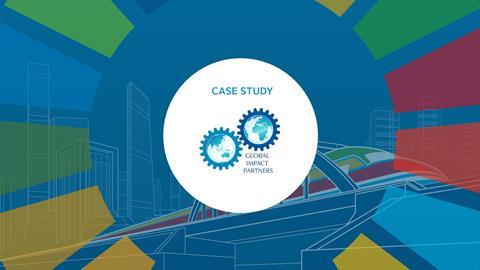Signatory type: Service provider (investment advisory)
Operating region: Asia Pacific
Practice area: Engagement and investment decisions
Global Impact Partners advises governments, corporations, and non-profits on strategy and impact investment. We collaborate with clients who are contributing towards achieving the SDGs within sectors such as infrastructure and urban development, healthcare, sustainable technology and sustainable agriculture.
Why we focus on the SDGS
The SDGs naturally align with our ethos and provide a framework to guide project selection and indicators to measure impact. We have integrated the goals into our primary ESG framework because their ratification in 2015 reflects a broad-based global consensus on the world’s most pressing environmental and social challenges. In the case of infrastructure and urban development, for example, we believe that the SDGs can provide a frame through which to identify and address the environmental challenges created by unchecked urbanisation.
We believe that applying SDG-based performance targets to projects, through the use of onsite renewable energy generation and smart grids, for example, can directly reduce the operational expenditure of the assets, demonstrating the alignment of the SDGs with commercial objectives. Taking this detailed approach, we can guide infrastructure project design teams in making changes that will optimise the sustainable and commercial outcomes of the project.
Measuring project outcomes
We take a bottom-up, indicator-driven approach to assessing the outcomes from projects. Working with the master-planning and engineering teams during the design phase of infrastructure projects, we can optimise their designs to deliver outcomes which contribute towards the SDGs. In selecting relevant indicators, we use the SDG Impact Indicators guidance published by the Sustainable Finance Platform, chaired by the Dutch Central Bank, which aims to develop “a common set of impact indicators [to] help companies to improve the disclosure of impact data to their shareholders and creditors”1. We evaluate which indicators are relevant, taking into account the potential for positive and negative outcomes from the project, and select those which we believe we can most influence.
Furthermore, working during the design phase allows us to ensure that the planned assets embed monitoring tools – such as sensors – to measure performance against these specific SDG targets and indicators. The monitoring tools are adapted for the specified target, whether that be measuring renewable energy generated, or proportion of wastewater recycled. Where appropriate, we also use third parties to conduct qualitative monitoring on our behalf, such as customer surveys, and publish independent reports. These tools are integrated into a centralised monitoring platform so the delivery of SDG-linked outcomes can be continually assessed and adjusted as appropriate.
Example: Orange Smart City
Orange Smart City (OSC) is a sustainable smart city development situated near Mumbai. It has been designed using an innovative approach to city planning and development that incorporates technology, design, and systems to optimise its social, environmental, and economic outcomes.
GIP was engaged by the project developer, Orange Smart City Pvt Ltd, to advise on generating impact through the project. This entailed structuring the project from an outcomes and commercial perspective, to make it attractive to investors and working with the company leading the master-planning and engineering of the site, Surbana Jurong. It also meant ensuring that sustainability was considered from the outset of the project.
The SDGs were chosen as the framework to distil Orange Smart City’s broad vision into specific social and environmental outcomes. For example, the design plan and targets for the construction of residential real estate in the city was driven by SDG indicator 11.1, which refers to the number of people with access to safe, affordable and sustainable housing. Similarly, SDG indicators on water and energy use led to the integration of smart grids, onsite renewable energy generation, and water efficiency and rainwater harvesting technology. GIP worked closely with the Surbana Jurong team on integrating these outcomes into the design, and on using technologies such as sensors and monitors to measure and report on them.
Project reporting has been built around these and other relevant SDG indicators so that there is ongoing monitoring of progress towards targets. As noted previously, this monitoring can be carried out through a mix of technology built into the different assets, surveys and other information-gathering processes by third-party organisations. Reports on these indicators are published on an online portal where investors and other key stakeholders can monitor and evaluate outcomes.
A key lesson for the team throughout this process was that the SDGs have a strong global brand across the investment community. We have found them to be an effective tool for communicating intended outcomes of projects, such as OSC, because they are increasingly recognised and understood by investors. This in turn has stimulated greater investor interest in OSC.












